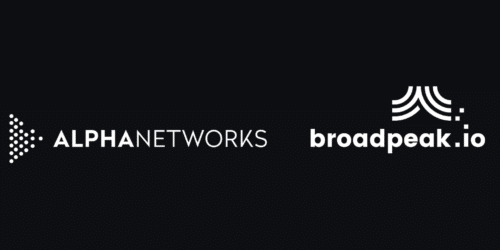Dominique Tanguay, System Engineer at Broadpeak, made the presentation “The What and the How of Simsub” during the Kitchener Waterloo Video Technology Meetup the 31st of March 2022.
In his presentation, Dominique give all the clues about Simsub, and how you can implement it within minutes with broadpeak.io.
Here are the topics discussed:
- Simsub introduction
- The concept of Simsub
- Conditions and requirements
- Implementation cases
- Next steps
Watch Dominique’s talk here:
Or read its transcription here:
Agenda
All right. Quickly going over the agenda, feel free to stop me if there’s questions. Let’s make it a bit agile here. Quickly at a glance. The content for tonight, I have a quick introduction. We’ll want to quickly go over Broadpeak, who we are, what’s our expertise, what we do in the video platform, and mostly where we’re going and diving into our newer platform, which is going to be showcased here indirectly.
Then a quick coverage of the actual concept, so the what of Simsub but also the why always help to get the brain around why some of those requirements are inquiry at times but to give a better idea of the situation. Then going over conditions, requirements, really more looking in the technical aspect to it, to Simsub per se. Then the implementation, going quickly over what’s been done, especially on legacy system on the broadcasting side of things. And then actually going into our own solution. You’ll see it’s probably not as technical, I think, as the audience could’ve took, but we’ll try to expand. That’s probably when we’ll get into more questions. We’re going to close up with next steps, probably trying to add towards what we can actually do with the solution ahead and as we grow and make more use of it.
Introduction
Quickly the introduction. Obviously not here to sell you something. It’s not to sell Broadpeak. It’s just to give an idea of who we are. It’s a French company. We were founded in 2012. We’re developing software, so really focused on the software side. We do resell hardware and whatnot, but that’s not our forte. Our forte is the software. We’re building up everything from the origin standpoint up to the distribution, so the origin itself, load balancing edges and so on. Most of our experience we’ve gathered with, or usually we deal with, service providers. We’re here thinking about cable operators, telcos, mobile operators, anyone who has a network where they deploy technology for videos. Here, we’re thinking about origin, but the key products, I guess you have down there at the bottom here.
So you have, for instance, ultra low latency, CPVR, but also multicast ABR type of solution. That’s generally our bread and butter. The only thing was that for all those years, we’ve always been dealing with mostly tier one, tier two pay TV operators, but we’ve never really got to a point where we could actually liberalize a bit the knowledge we have and the products we have. In 2021, we started a broadpeak.io platform, which is a Cloud based platform where we’re actually slowly building all of our products one by one. And now we’re going to be talking a bit about one of the key products at the moment that we have with broadpeak.io, which is manifest manipulator.
It is a SaaS service. You can definitely go into just type in https://www.broadpeak.io. You’ll see over there you have the full fledged capacity to use the service. At the moment, it’s a manifest manipulator, but as we discussed, you’ll see what you can do with it, but you actually get a 30 day free trial, so if you want to just test it out, you get the free trial. We have some sample services and sample feeds. You don’t need to bring anything with you if you want to try those out.
Simsub, the concept
All right. Then let’s get into the details. Simsub is a very Canadian concept, mainly because it only really exists in Canada. If you type in Simsub, you’ll usually get referred to Simulcasting, which is a UK thing, very different, definitely not Canadian. But Simsub in a nutshell, just to make sure everyone’s on the same page, is a regulation imposed by the CRCT on every BDU to replace any American OTA content with the Canadian OTA content whenever a program is identical and simultaneous, hence the Simsub, simultaneous substitution.
Kare 11 is an NBC affiliate. Assuming that both Kare 11 and Global Winnipeg here for this example are actually showing the same basketball game. However, this one has American commentators. They have their own American ads. It’s their own fully fledged broadcast of that NBA game, and we have the same from Global. Odd example I know, but still bear with me. It’s the example. What’s usually going to happen is if you watch it on a five TV or Rogers TV, what’s going happen is that you’re going to start watching your regular programming and without switching channel, as soon as the event start, you’ll start watching the Canadian version of it and then you’ll get back to the regular programming.
Suffice to say the whole intent is really not to get away from the normal programming, but anytime you have a content that’s American, you switch the whole thing. Now, you’ll ask why the full thing, why don’t you just switch over the ads because that’s truly the rationale for Simsub? Well, it’s a technology question. CRTC ruled at a very long time ago, and they just did a flat out version based on the technology at use at that time. Now, why just OTA channels, not other channels? Why should we use substitute stuff that’s on Verizon, NHL Network? There’s a historical reason.
History of simsub
Just going a few years back, just for the little history course. It’s been quite some time that Canadian broadcasters are actually paying for American content and playing the same content over here. We’re thinking a Global, CTV, those channels actually buy the American content, play it back on their side. But historically speaking, they’ve always been losing quite a lot of money in terms of ad revenues, because whenever you live near the border, you actually had both channels, you could choose and go to the ABC channel instead of CTV. That was actually diluting significantly the ad revenues, except if you were actually quite far from the border. There were still a portion of the pie for the Canadian broadcasters then made really the tradition or the idea, the application, of buying those programs very sound, economically speaking, but still it made their point and they started doing it anyway.
However, at one point, with the coming of cable and later satellite TV, the American four plus one, those OTA channels, were all of a sudden being made available to everyone in Canada. All of a sudden you could be super far from the border, yet still get those four plus one, and that just made their ad revenue just dip that much further. In 1972, Canadian broadcaster put pressure on the CRTC and CRTC ruled that any channel provider, so here thinking Rogers TV, Bell TV, SHA Cable, or SHA Satellite, for those who were providing the four plus one American channels to actually do the Simsub over their content. That actually allowed them not only to secure ad revenues when remote from the border, but as we grew and we got rid slowly of OTH signals, it just increased, increased, increased the ad revenues for those broadcaster companies.
We don’t have specific numbers, definitely not something Bell and Rogers wants to share, but at the top here, you have a table that shows the incremental revenue per year. Obviously, it’s quite dated back. We do have a bit more fresh number in 2012, which was the revenue was roughly 250 million. Now, we’re probably talking about 500 million. We can only estimate, but it is a decent amount of revenue. All of that and the mindset of the CRTC back then was to actually invest or force broadcasters to invest that newly found money into local content, which is always a good thing. But there comes with a couple of drawbacks and issues and controversies, the main being, the perverse effect of getting those broadcasters to start broadcasting more and more American content, simply because it was that much more revenues for them anyway.
They didn’t have to fight for the same content or fight to get a better program on top of the American program. They could just have the American program and that way they made their money and put money on content outside of peak hours. Slight perverse effect, but anyhow as Canadian, I’m sure everyone knows about the Super Bowl. If you really want to get the Budweiser ads during Super Bowl, good luck, have fun, watch it from YouTube. I think it changed where it was last year or the year before. I don’t remember, but there’s been one year where CRCT actually tried not to force Simsub during Super Bowl, but it’s still a work in progress let’s say.
Also, those are known issues, but there’s a couple of technical issues that have been happening. First off there is a mini war between the OTA channels from the borders with the Canadian broadcasters. It has been seen where you have the ABC and NBC of this world changing which program or which episode was being played back or delaying a bit by a couple of minutes and so on and so forth to actually force complaints and try to break a bit the Simsub system really with a mindset of actually getting back that fraction of the revenue pie. There’s obviously that, but there’s also a known situation where you lose the program. We’ll talk about it a bit later, but all of them are actually scheduled and ends up at the right time.
There’s a bunch of situations where programs got lost. The best example is probably the David Letterman Show. I don’t know if everyone heard about that, but it was a live show and in Canada, nobody could actually see the 15 first minute of that very last David Letterman episode, not episode, but show. This one’s probably the most known, but a lot of those there’s been situation where HD was actually Simsub to SD. So all in all, even though it’s to the benefit of the big Canadian broadcaster, ultimately the customer ends up paying most of the bill. All right.
Conditions and requirements
Conditions
Then going over the conditions. I guess the first thing to keep in mind here is that there’s really two very distinct type of Simsub event. First one is a scheduled event. That’s the majority, I’d say probably 75 to 80% of the events are known. They’re tied to your EPG. You know when they start, you know when they stop and those can usually be automated. I’d say those are the easy one, the easy win, the low hanging apples, but then you do have some monitoring events. Here, we’re talking about sports games. Here, think about the NFL, which is consistently Simsub or any live show, Saturday Night Live for instance.
If there’s president speech or whatnot, there’s always a couple of those live feeds. In this situation, we actually not broadcasters, but TV operators actually need to have a person, at least one, sometimes one per region to actually activate. They literally have a button and a reverse button, but a button to actually trigger the Simsub and say, “Yes, now they show the same program. Same time. Yes, activate the Simsub. Oh, abort mission. It’s a different game. It’s the Raptors versus the Nuggets versus whoops. It should be a different game, abort mission. Don’t Simsub kind of deal.” Which is creating way more trouble for the customers causing significant amount of errors and always a lot of fun. Those are the two main comp complexities.
The nice last one, big one, is the multi-region. Much like the states, but probably just not as much, we have some regional version of each channels or each networks, most of them. In the Simsub situation, because those broadcasters could potentially have regional ads they’re actually enforcing, or the CRTC is regulating so that TV operators actually have to Simsub the local version to the customer. For instance, Chris, you’re in Waterloo, you receive CTV Kitchener or CTV Toronto. I don’t know. If we’re both watching the NBC channel and the event is being Simsub on CTV, you should be receiving CTV Kitchener program, and I should be receiving CTV Ottawa program. So always create quite a lot of havoc. As you’ll see, it expands the possibilities drastically with respect to how many different channels or version of channels you would actually need to create.
Requirements
Some further requirements, this one’s actually written oddly, but the whole idea is here the switchover happens without the interaction of the customer. I would even put it to the point where it actually happens without the customer’s content. That’s the whole idea. It really needs to happen on them. Obviously, neither do they need to trigger it, but truly they can’t undo it or bypass it really. Here in the case of OTT, I don’t think we need to go too deep into OTT with the audience, but in this case, we need to base the switch on a program time and not on a player time, which is a bit easier to do normally if you’re using multicast, but in the case of OTT, you really need to base it on program time.
Here, maybe more of you can see it as a business analyst trying to think about the requirements or what we want to make the tool look like. We want to make it as automatic as possible so that you just throw in your schedule. You can leave it there and not touch too much. We need to allow for manual override, as I mentioned. Probably even as well for scheduled one. You need to be able to revert them if needs be, and you need to ensure a quick switch, but more than just a quick switch, you want it to be as seamless as possible. That’s where it comes the fun really.
Finally, a couple of extra requirements. A subscriber should never be able to see the replaced content, so even if he records the show, he uses trick play, restart, there’s no way he should actually not get the replaced content, not see the American ads. It’s mandatory for every screen. Simsub applies even if you’re watching your show on your iPhone, tablet, etc… Finally, maybe that one could be interesting depending on which you work for, but this is something that’s mandatory as soon as your BDU reaches 2,000 subscribers.
Here, it’s still a very legacy mindset. If you’re dealing with a large operator that covers the whole of Canada, it goes by market. But in a nutshell, as soon as your little market reaches 2,000, the day actually you reach 2,000, technically you’re supposed to enforce Simsub.
The key rule to know whether it needs to be broken down or not is truly bound by the type or the proximity of the closest OTA tower. Basically if you’re in a market where you should be getting, Global is a bad example because there’s only one tower, but usually you base yourself off of CTV towers and you have a market per CTV tower. But if there is a market where you have one CTV tower, but you actually have a different channel that’s overlapping, then that could actually break it into a smaller market in between. If you see the idea. It’s a matter of saying, “What are your local OTA channels?” And as long as you have the same local OTA channels, technically you can actually enforce that as a single market, single BDU. I’m going into the legal things of that because that’s what I did in the past. Those are the technical aspects.
Getting the data
There’s different ways to get that information. The more common version is actually to request the data from a company called Media Stat. I don’t know if you guys have heard of, but they have the probably, I think they’re dealing with most of the big companies anyway. What they do is they ask the different broadcasters. They get all of the programs, schedules and they arrange the Simsub. This is an example of a CSV file that they would be sending weekly, roughly. You get the idea here. You have the day, start time, stop time of the actual Simsub. This is the program. Always useful when you monitor. Monbeg, monend is actually monitor begin and monitor end.
In this screenshot, you have some that are fully, fully live, but there will be situations where, for instance, if you’re where we’re talking about the first NFL game in the day, the kickoff will always be at the same time, so the begin time would normally be fixed and would not need to be monitored. The end would definitely be monitored, and then if the next channel afterwards actually also needs to be Simsub then in some cases that extra channel would have a monitored begin, but not a monitored end. I definition comments, but not. In here, those are the initial channel and the two channel.
These are just station names. You’ll recognize maybe a few of them. In this example, it feels all over the place. You have multiple times Saturday Night Live, because first off, they still mix high definition and standard definition. You see how legacy that system is, but you can also see you have king care, you have a couple of those channels that are actually being Simsub to CKMD is probably a local CTV station to Brandon Manitoba. This is, by the way, it’s an example file from one of our customers. You see that Kare is going to be Simsub with this, King channel with, I really honestly don’t know which one, but this is an American one for sure. It’s going to be Simsub with this, but you’ll also have this one CIII, I think it’s either CTV or Global Toronto and that one also technically would need to be Simsubbed with the local version of that very same channel.
Implementations
Legacy examples
First off, as we were trying to figure out what to do or how to deal with that quite some time ago, we obviously first looked into what were the legacy way of doing things. Here’s our couple of example, first breaking things into satellite and cable, because the technology is quite different. You definitely don’t have the same means for each of them as the cost to bring a channel in space is that much more significant than cable.
But for satellite here, the first example, the very cheapest and simplest is the Bell Satellite TV. Here, I don’t have an example, but according to the slide, it seems like it just substitute one channel over everyone. It’s semi bending the rule, but that was accepted by the CRTC where basically, I can only assume, but I get the feeling that if you’re in Saskatchewan, you will likely get the Global Toronto feed whenever you get a Simsub. Probably not ideal, but does the trick, I guess, they do the same way the cable. I’ll get to that in a moment.
Then you have probably the most inventive version that I’ve seen, which is the SHA Direct, which sends the schedule to the receivers, much like they would do with the EPG information. The receiver actually knows the current postal it’s implemented on and the receiver just does the switch. The tuner switches between one source and the other, so you would only assume that whenever you see that Simsub appearing, it’s almost as if the signal box switched channel on you, but still interesting way of doing it. Then you have probably what’s the most used version, which is what the cable company use. What they do is they switch it on directly onto transcoders.
Some do have their own proprietary versions, but the ones that’s the most commonly available is a soft or a set of drivers that are created by BCI, which is a Saskatchewan company, Broadcast Control Incorporated, if you want to follow the link. Very nice guys, you see a little screenshot of what they do. It’s small here, but the whole idea is really that they ingest the CSV file and they actually allow it to switch between one channel to another. Now, that’s all convenient, or decently convenient when you have multiple BDUs, everything’s decentralized and you’re already forced to have multiple transcoders. It can be decently convenient, but it’s not exactly practical for whenever you get towards OTT where everything’s centralized, because you get into a point where for that ABC channel, for instance, you need to have an ABC version for every region, for every market or DMA, if you wish. You need that ABC Ottawa, because you’ll need to switch with the source at one point from CTV Ottawa.
Moving from legacy to OTT
We thought about it, because I was working with the customer where we first implemented Simsub at Broadpeak, but that was just the costs were a bit prohibitive. It was going to cause trouble, especially with recordings, so we actually moved to a different solution. We can always do it directly on the multicast right at the outside the exit of the transcoder, but we actually chose to do it using OTT and manifest manipulation. I’ll probably skip over the actual explanation of what OTT is. I think the audience is technical enough, but obviously if you have questions, we can dive deeper, but the whole fact of being able to dance around the video chunks made it that much nicer.
Here’s maybe a quick diagram of what we do. We’re relying on broadpeak.io for that. You could basically reproduce the same thing if you wished to. What you would need is the original content manifest and a replacement content manifest, but the good news here is that this is on the Cloud and that way you don’t have to reduce the whole feed and send it to the Cloud. All you need is the simple manifest file that much simpler. We need to know we have the actual input. At the moment, what we’re ingesting is API calls. Not exactly the CSV file that you would get from TV media, but we’re working on getting an adapter as well.
OTT with broadpeak.io
The whole idea is that you get an audience, a time slot action, what to do. That’s actually what’s nice about SCTE224, which is that we can actually use that. The schematic is actually meant to do much more than actual Simsub. We’ll dive deeper into that later on. We allow for some extra query parameters, mainly in the case where the actual audience or what differentiate the audience to get this versus that is not exactly a perfect mapping to the actual request.
There’s some extra mapping capabilities, and then you actually have the customer request. The customer will be requesting directly a manifest to broadpeak.io. By the way, those can be already encrypted. There’s no issues. It requests the manifest to broadpeak.io, and usually it will request it with could be something in the editor, or just with the IP and so on. That way you can get a customized content version based on could be zip, could be whatever you actually wish it to be as long as you pass it through. Then you get some mixture analytics. That’s the black box magic if you will.
Manifest manipulation
Here’s an example where we’ve tried to clean as much as possible, but you have the HLS manifest, the dash manifest. In dash, we’re adding a new period set period ID and it just goes through. But here, maybe on the HLS side, it might be a bit more intuitive or easier to see. This is a single profile manifest, but you could see here that we’re watching ABC Boston chunks. And then at one point, just throw in a discontinuity, we change the key and now we’re onto CHCH.
Playout experience
This one’s just an example for the actual video that’s coming in soon where we’re actually flipping to CHCH, which is a Canadian channel, and then back to ABC bus right afterwards. That’s just the example. Here we have I actually managed to get a quick video from it. I’ve been playing with the sound a bit. I think the recording is distorting a bit. You’ll see the audio video sync is not great, but that’s what it looks like.
Next steps
Once you have that type of technology, once you have a manifest manipulator, there’s a couple of other ideas of other ways you can leverage it because it’s really using the same type of structure and capacities. Quick examples would be obviously blackouts. There’s blackouts on any channel games. If you happen to have a TSN four game, you only have the original stream and if you’re watching a Maple Leaf game, you need to black it out in Ottawa, for instance, then you could use that, but not only to put an actual blackout, but can actually put a slate on it or show TSN info or show an extra programming or even a small VOD file that you would’ve created saying this show is not allowed in your region: “Sorry. If you want to complain, here’s how to complain to the CRTC or actually the NHL in this case.”
You could also use it for emergency alerting systems. If you were to record or create your mini video of that Amber alert rather simple to code you actually fit it in. You can throw it in as a Simsub basically. As soon as you get it, you encode your little video of that ad, you press the button, you publish it. And truly with emergency alerting system, all you need to do is to provide a polygon. You provide a polygon and we’ll do the mapping based on IPs.
It can actually also open business module. Here, we talked to a degree about ad insertion. It’s really the same mechanism. You can do regional, but you can even push further. Pair that with a Google ad server and do some targeted ads to the IP really. You can always also do audience based virtual channels where you just add in extra VOD assets, much like the HBO channel would do or Super channel, where you just have a series of video on demand version you can cut it with your ads and/or PTV. Quite a few possibilities!
Thank you!
Photo by Daryan Shamkhali on Unsplash










